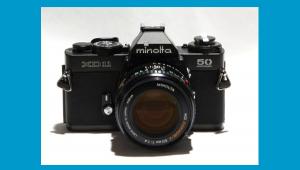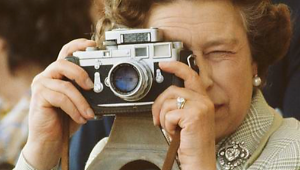Check Out the Most Extensive and Interactive Collection of Photos of America in the Depression-Era 1930s

If, like most of us, you think that you know all about the Dust Bowl/Depression Era photography of the Farm Security Administration, think again. While you may have seen some of the FSA’s greatest hits, like Dorothea Lange’s “Migrant Mother,” there is a rich vein of images still to be discovered. In the ten years from 1935-1945 some of the nation’s finest photographers fanned out across America to document a nation in crisis and its recovery. They made over 170,000 images of which just a few, the cream of the crop, like the Migrant Mother, have been widely published.
Now a team at Yale University has created a web-based platform called “Programmar” that lets you see every single one of those thousands of images. Using a marvelous interactive map you can search through the mammoth collection by county or state, photographer or subject. It is a truly fascinating accomplishment and it’s addictive.

Photogrammar is simple to use and in no time at all I found myself spending hours browsing through this vast library of images. I searched for particular photographers, particular locations and found hundreds of great documentary images.

And every once in a while I came upon a truly remarkable image like the color shot by Jack Delano of a smokestack in Maine. (See below.)
The story of these remarkable pictures begins in the early 1930s when the courts repealed much of Franklin Roosevelt’s first New Deal. Roosevelt fought back creating new programs to replace the invalidated ones. One of the new ones, the Resettlement Administration, whose purpose was to help America’s poorest farmers, came under immediate attack. The RA provided displaced farmers with low-interest loans and resettlement on viable land. But despite its good intentions Roosevelt realized that he needed to build public support for it.

Roosevelt’s handpicked choice for director of the RA was economist Rexford Tugwell who in turn hired a former student of his, Roy Stryker, to lead the public relations effort. Made the head of the Historic Section, Stryker hired some of the finest photographers of his generation to photograph projects around the country. The group included names that are legendary today: Dorothea Lange and Marion Walcott, Russell Lee and Andreas Feininger, Walker Evans and Jack Delano.
Their job was to create a snapshot of America recovering from the Depression through the help of the government programs. The photographers fanned out across the country and then send their negatives back to Washington where they became part of “The File.” From this massive archive of images thousands of prints were made and distributed to newspapers and magazines nationwide. Of the 170,000 photographs in the collection some 88,000 were actually printed and many of these were placed in the filing cabinets of the FSA-OWI.

The Photogrammar collection is actually made up of six different collections ranging from the Farm Security Administration material to the Office of Emergency Management-Office of War Information files. About 17,000 of the photos are in color and can all photos can be downloaded from the site although users are reminded of copyright and other use restrictions as needed.

Out of curiosity I used the interactive map to see what images had been taken in places I had lived like Seattle, San Francisco and New York. The photos were always a surprise but I did encounter one big disappointment. Looking through the New York City archive I discovered that while these great photographers had photographed nearly 2700 images of Manhattan they had made four—just four!—in the Bronx where I was born and grew up.
Check out more of this treasure trove of images at Photogrammar. Just make sure you give yourself enough time to really look through this amazing collection.
















































